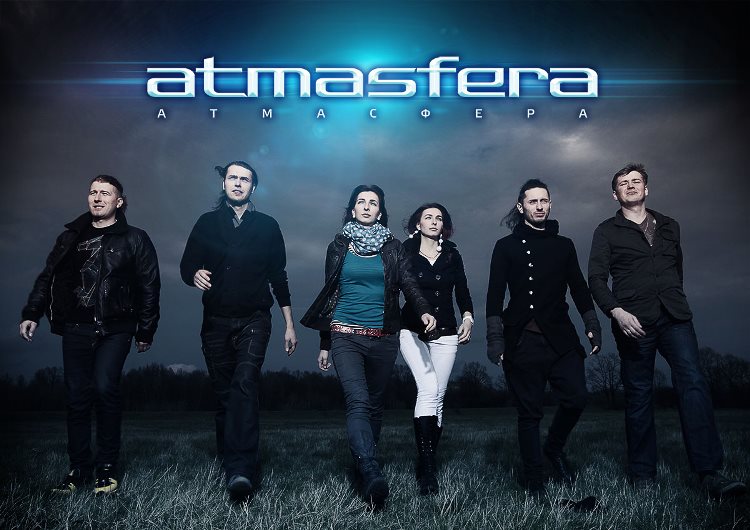
Timur Gogitidze, Misha Puziurin, Nastya Yaremchuk, Yulya Yaremchuk, Andriy Shadiy, Andri Cherkasov
click image above or album covers below to visit the band's official website
review © Russell W. Elliot 2013 | last updated 12 May 2013
AtmAsfera
.: Musical Discoveries Best of the Year 2012 :.
interview and album reviews of folk, world and progressive music from the Ukraine
AtmAsfera is an experienced six-piece folk, world and progressive band from the Ukraine. The band was formed by stunning vocalist sisters Nastya and Yulya Yaremchuk--who also front the band--and Andri Shadiy. Their sound has evolved from progressive to folk and then to world blending all three styles effectively in their most recent recordings Integro and Internal. Read our interview with Nastya and Yulya below.
The name of the band consists of "atma" or "personality” in translation, and "sfera” or something which surrounds a personality. This title says about something which surrounds a personality: a person's internal world, feeling and problems. The band started not in Lvov where most of the musicians come from, but in the southern town of Simeiz in 2003. Two years later, AtmAsfera moved to Kiev where Sasha Goncharuk and Andriy Cherkasov joined them. A new drummer, Timur Gogitidze, has also played with them for the last two years. Each concert is really an event for AtmAsfera's musicians, one where they completely express themselves to create an atmosphere of understanding with their listeners, because apart from it, their fans demand high quality sound and arrangements of their songs.
AtmAsfera's music is outstanding and they are rapidly gaining significant popularity worldwide. The music features a broad range of instrumentals and has three vocalists. They are known to be the favourite guest at many European festivals. Band members are: Anastaslya "Nastya" Yaremchuk (flute, vocals); Yulya Yaremchuk (keyboard, vocals); Andriy Shadiy (mandolin, electric guitar, saxonette, flute, vocals); Andriy Cherkasov (bass, backing vocals); Timur Gogitidze (drums, darabuka) and Misha Puziurin (acoustic guitar). Most of the songs are sung in Ukranian although there are several songs with English lyrics.
The editorial staff at Musical Discoveries began listening to AtmAsfera in October 2012 and spent countless hours with their four albums before selecting the band as 2012 best of the year. The three most recent albums have distinct musical themes that run through them, developing further across the tracks. Visitors will find a variety of the band's music online both for listening and visual enjoyment. Visit the band's website and YouTube for more. Reviews of the four albums follow below.
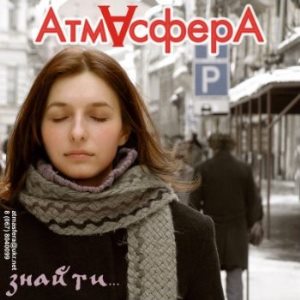 To Find
To Findimage © AtmA Records 2005 |
The band's debut album To Find (AtmA Records (Ukraine), 2005) is a collection of heavy metal-edged progressive tracks that provide an interesting introduction into the band's formation. Here Nastya and Yulya's crystalline and expressive vocals soar above the guitar-laced arrangements. Tempo and style changes within the tracks and across the album contribute to its progressive feel. And the album cover reveals the Nastya's incredible beauty and her innocence at the time. Vast electric guitar excursions contribute to the harder edge of AtmAsfera's sound. All good progressive rock albums mix light and airy with dark and heavy. To Find does the same by adding flute and acoustic guitar and mixing elements of jazz into the sound. The album's title track has strong allusions to early Quidam with flute and electric guitar contributing to folk rock styled arrangements. Not without crunching electric guitars, the band's by now characteristic percussion and bass contribute rhythm and cadence to the standout. Instrumental breaks hint at how the band's sound will develop on future albums. We loved how the lead vocals were echoed by the guitar solos and how the band blended strings with heavier electric guitar parts. AtmAsfera experiment with sound effects and spoken word in "Heart, "City" and "As All" among the album's other tracks. Clearly the standout track of To Find is "Loneliness," a well-arranged rocker featuring powerful vocal parts. While the sound varies between quiet and quite robust, the vocal work Nastya and Yulya as well as the flute have important parts that contribute to the outstanding sound. As with the track "That ..." the vocal work points to harmonies that will be featured in the band's future recordings. The closing and standout track "Sun" is a very dynamically arranged vocally-laced ballad. In addition to the wonderful flute solo, the rhythm section, superbly delivered vocal and electric guitar production are great. | |
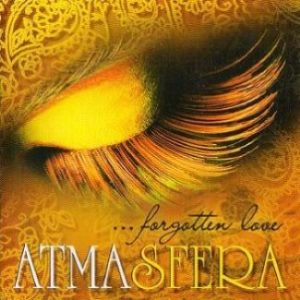 Forgotten Love
Forgotten Loveimage © Wai Lana Productions 2006 |
AtmAsfera's second album Forgotten Love (Wai Lana Production (Ukraine), 2006) released only one year after their debut, is comprised of all new songs. The sound differs dramatically from their first outing. The album is musically themed, meaning here that a series of common themes develop in the individual songs and recur adding depth and diversity as the album progresses seamlessly from beginning to end. Second, the band's sound on the album is tremendously consistent--flute, percussion, strings, keyboards and light guitars provide the backdrop to the crystalline female voices which are most clearly featured singing in harmony from the very beginning. Acoustic percussion contributes to the world-music sound that emerges. The band are also to be congratulated on the album's outstanding artwork including a stunning cover, brilliantly illustrated booklet and liner and a lovely silkscreen printed CD. It perfectly compliments the outstanding music that graces the ten tracks with over an hour of running time. Nastya's expressive flute playing carries the medidative operning track "Nama Om." On closer reading, we note that Anastaslya is her full name. "Syamakunda Radhakunda" begins somewhat medidative, accompanied by both keyboard washes and the sisters' lovely vocal harmonies. The song develops into the first of the album's reels. Vocals enter the fray before the track concludes with a replay of the reel. Listen to the speed and precision of the playing. The upbeat "Radharani Syamasunder" continues to perflectly blend strings, vocals and acoustic percussion. Expressive lead and harmony vocals sung over light string and flute arrangements clearly makes "Samsara" an album standout. It's perfect bookend is "Sri-Guru" that follows. Nastya's crystalline vocal lead is superb. The album's title track "... forgotten love" (Ukranian version) is a tremendous duet sung by the sisters. A full arrangement of the earlier reel recurs atop keyboard washes before the band's full splendor contributes. We especially enjoyed the English lyrics at the conclusion of the track. Two of the album's most memorable and strongest tracks are the thematic and medidative "Gopala" and "Gouranga." These tracks, separated by the orginal version of "... forgotten love" are both well-arranged vocal numbers. With their tremendous arrangements and sung parts, we loved the vocal harmonies and powerful flute and string solos in these tracks. Pay particular attention to the crisp opening percussion in the original version of "... forgotten love." We appreciated the English lyric and vocalise harmony as well. Listen to the breathing in the flute work in the third recurrance of the reel to hear Nastlya's virtuousity. The album concludes with standout track "Brahma-Samhita" whose tremendous melody and lyrics return. They are apparently soare important to the band that the themes and choruses appear to recur in Integro and Internal albums. | |
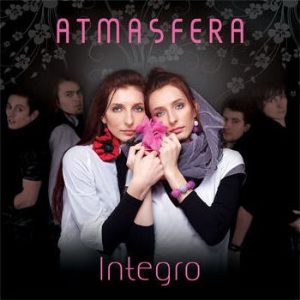 Integro
Integroimage © Wai Lana Productions 2011  click image to visit AtmAsfera FaceBook
click image to visit AtmAsfera FaceBookYulya and Nastya Yaremchuk image © AtmAsfera 2013 |
AtmAsfera's third album Integro (Wai Lana Productions (Ukraine), 2011) was released five years after their prior work. Yet another significant step forward for the band musically, with recurring themes, fantastic arrangements and superb vocal melodies, it is by far the most listened to AtmAsfera album at Musical Discoveries and our favorite. It is not to say that the most recent album is also superb, but Integro is so powerful, so well arranged, and so memorable, none of the band's other work can top it. Artwork accompanying the CD is superb with a lovely photo of the band adorning the opening two pages of the booklet. The album's twelve tracks run an hour. Perhaps played best just as their prior album concludes, AtmAsfera's Integro opens with "In ..." almost precisely and quite amazingly where the themes of "Brahma-Samhita" left off five years earlier. Strings and flute, again, are especially well arranged as the album opens. The upbeat track "Endless Story" presents the first theme of Integro. Close your eyes as a percussive Cirque du Soleil arrangement to your ears. AtmAsfera's vocal work is immediately dramatically more intense and harmonious. Listen for "gopala" and "govinda" that recur in the lyrics. Album standout "Another World" introduces the album's second theme, sung rhythmically against acoustic percussion and flute before the full splendor of AtmAsfera comes online driven by a powerful string part and the lush harmonies that fill the chorus. The instrumental mid-section is amazing. With it's differing arrangements and lyrics, "Whisper" repeats themes introduced during "Endless Story." Listen especially close for the outstanding mandolin solos that span the track accompanying violin. A tempo change mid-song adds a vocal chorus and opens up the instrumental arrangement further building the album's diversity. Don't get caught by the false ending before the closing passage is played. The album's musical theme is further developed in "Flower and the Wind," a warm keyboard and vocal number that builds on "In ..." adding elements of "Endless Story" in its arrangement. A style change brightens up the keyboard and adds striking flute and violin to the mix. Vocal harmonies are performed wonderfully echoing sounds from "Endless Story" in the track, but more percussively. Mid-album is the powerfully percussive "Kozak" instrumental whose arrangement introduces a Ukranian sounding theme featuring flute, strings, and of course layers of drums, to the album. The Ukranian theme is further developed in "Gucul," an upbeat track--and album standout--that ultimately blends the "Endless Story" theme with "Kozak." The memorable {"gopala") chorus that develops mid-song and recurs between two gorgeous verses and a great instrumental break is among the very best that AtmAsfera offers its listeners. Listen for the tightness in the percussive performance of the instrumentals and tremendous power of the two female vocalists. "Every Step ..." is Integro's English lyric track. Although the pace and instrumental intensity and complexity builds within the song, the opening and closing passages are gentle ballads sung harmoniously by the three vocalists atop gorgiously performed flute, string and mandolin arrangements. The album concludes with "Namaste." While the guitars initially may seem a little out of place on the album, when joined by violin and flute melodies and the percussive string arrangement, the song works well integrating themes developed earlier in the album. Radio versions of the album's most popular tracks "Whisper," "Gocul" and "Every Step ..." are also included on the CD. These are shorter but otherwise almost identical to the longer versions on the album. This album is AtmAsfera! | |
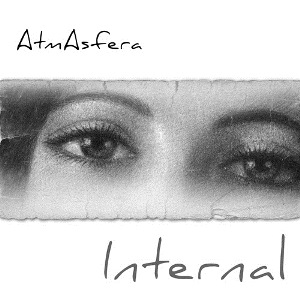 Internal
Internalimage © Wai Lana Productions 2012 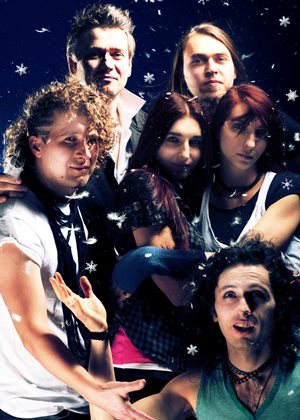 click image to visit AtmAsfera FaceBook
click image to visit AtmAsfera FaceBookAtmAsfera [Winter 2012] image © AtmAsfera 2012 |
By AtmAsfera's fourth album Internal (Wai Lana Productions (Ukraine), 2012), the band have found their sound and rhythm. The CD's distribution has been picked up by EMI Music Poland. Additional endorsements on the album cover demonstrate the band's increased commercial success. The album is packaged as a cardboard six panel tri-fold without a booklet. Photos of the individual band members and a lovely sketch of the entire ensemble adorn the sleeve. Yet with this success, there is no compromise on the quality and originality of their music. The one hour album is comprised of ten primary tracks; two original bonus tracks are and a radio edit of "Almost" are also included. In addition to the shorter tracks, two epic length numbers and a four-part suite adorn the production. The percussion and voices of the "Intro" track clearly set the stage for Internal. Production of the strings, flute and percussion is notably sharper and richer. Vocals have been given a great treatment as well, literally jumping out of the mix. The first song, an epic, begins as a gorgeous ballad and is entitled "Where Should I Go." It is beautifually sung by Nastya in English. Joined by Yuliya's harmony, the "govinda" theme that recurs throughout the album is backed by saxophone and strings. Instrumentals build to a crescendo before the lovely second and keyboard-washed and acoustic guitar-style ballad passage of the song begins. It concludes with a powerful vocal passage. The percussive "Bala" is a brief upbeat track with a Celtic flair. The epic "Almost" is comprised of a gentle ballad that fills its first half and opens with an outstanding vocal segment. The tempo and intensity builds in the second half as woodwinds and deep percussion enter the mix backing layered the Yaremchuk sisters' vocal excursions, yet returns to the gentle arrangement of the song's beginning. A shorter radio edit of "Almost" is included as a bonus track on the disc. "Lonely Night" is a similarly constructed, somewhat warmer number with a delicate vocal passage within it, that also builds to a powerful instrumental and vocally rich conclusion. The centerpiece of Internal is the "Tetralogy Apocalypse" suite. Part I, entitled "War," is a tremendous track, a tightly arranged and performed percussive instrumental while Part II, another instrumental entitled "Inside," showcases an extended saxophone solo atop warm keyboard washes. Part III, a much more meditative vocal number, is entitled "Inspiration." The suite climaxes in Part IV, "Life," with lovely vocalise, flute, sax and acoustic guitar producing a bright arrangement that builds percussively. Whispers, lyrical passages and additional vocalise add great texture. The album concludes by wrapping up the themes developed earlier in the project into a cohesive whole in "Voice of the Wind." Listen for the perfect blend of AtmAsfera's instrumental range with their lovely vocal melodies. The album's three bonus tracks include a radio version of "Almost," as well as two more numbers. "Fly Away" is short and upbeat and percussive number laced with thick electric guitar, vast Celtic flute excursions and lovely English lyric vocal passages. In "Viva," (a song for UEFA Euro 2012), the band deliver a drum-intensive radio-friendly English lyric track designed for mass appeal. Watch the video online. AtmAsfera have stretched their boundaries while building momentum with Internal. The players are talented, tight and committed. With a well-defined and well-honed sound, the ensemble seems to be without limits. |
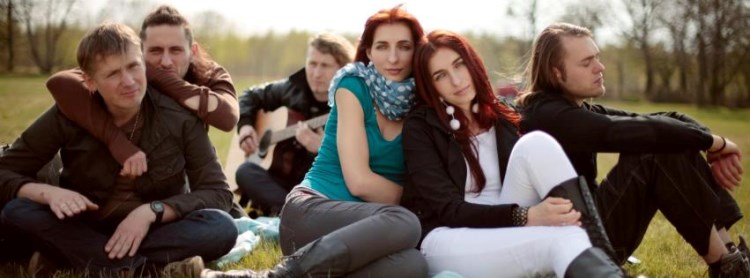 click image for AtmAsfera's FaceBook | image © AtmAsfera 2013
click image for AtmAsfera's FaceBook | image © AtmAsfera 2013 |
At this writing AtmAsfera's four albums are available from the band's website or via their FaceBook page, from European outlets and may be available in the United States and Canada as imports. The To Find album appears to be out of print but is still available as a digital download from some online shops. The three most recently albums will certainly be easier for interested listeners to acquire.
AtmAsfera continue to have a busy worldwide touring schedule, having toured Indonesia last autumn. While they have not yet visited the United States as an ensemble, we hope that 2013 or 2014 will bring this outstanding band to the American public in person. Until then, people have to settle for their recordings and online performances at FaceBook or on YouTube. Congratulations to AtmAsfera for being named our 2012 Best of the Year! Bravo!
Musical Discoveries: Please tell us about your background, how you got into music, the instruments you play, and your vocal training. Nastya and Yulya: We were born in a family of musicians--saxophonist Yuriy Yaremchuk--who always instilled in us a love for music and the arts in general. Dad was really hoping that will have a boy, but had two twin girls. Nastya older than Yulya by just 15 minutes. Since childhood, Dad taught us to improvise and most importantly always be free in making music, never hung up on the rules and restrictions. Even after the time and received a classical education--Yulya, piano; Nastya, flute--in a special music school of Krushelnytska and in the Lysenka Academy of Music, we have not forgotten the lessons of our Dad, and were not limited by execution of classical music, although it has given us a thorough foundation for our
future works.Interview
 click image for AtmAsfera's FaceBook | image © AtmAsfera 2013 |
We were looking for techniques and forms of expression for our music, especially we liked minimalist technique, which originated in the early twentieth century, like Michael Nyman, Philip Glass, Steve Reich. We always wanted to create our own music, pass our thoughts and ideas through music. Basicly we began to sing only after creating a group.
What can you tell us about the formation of AtmAsfera?
We were looking for techniques and forms of expression for our music, especially we liked minimalist technique, which originated in the early twentieth century, like Michael Nyman, Philip Glass, Steve Reich. We always wanted to create our own music, pass our thoughts and ideas through music. Basicly we began to sing only after creating a group.
Somewhere on the second course of the musical academy we realized that we would like to create our own band and started looking for like-minded people. The first people of the actual band with whom we met were Andrey Shadiy and Igor Sas. This started our art-rock project. We recorded the album Znaity (To Find). Then simultaneously to this project we also started to create songs in a different style, which was closer to the ethnic, there we used more of acoustic instruments. At this point we were joined by Andrei Cherkasov, Alexander Goncharuk and Taras Melnichenko.
As it turned out ethno project has become more relevant and popular. For several years, our membership has somewhat changed. In place of the old drummer came Timur Gogitidze also changed our guitarist Misha Puzyurin, Alexander Goncharuk has left a band. Recently, we were joined by another drummer Sergey Krasutski who plays the drum set.
Please will you describe your roles in AtmAsfera for us? Who writes the songs, the lyrics, and arrangements? Can you confirm which instruments you play on the albums for us? (We have read it in the liner notes for the last three albums.) Do one of you dominate the vocal parts in the music? If so, which of the two of you is singing most of the time?
 click image for AtmAsfera's FaceBook | image © AtmAsfera 2013 |
How does the creative process work in AmAsfera and what are the different roles of the members in it?
Our creative process often looks like a joint improvisation. We inspire each other with new ideas. We are all very different with regard to musical tastes, as well as in character. And this is interesting, sometimes from our colleagues we can hear something that would never come to our mind. What we have in common is something deep within us, our position in life and our views. So its difficult to pick out particular person who would be responsible for specific area. The drummer can offer singers how to sing this or that part, to offer his own text. Our guitarist can advise the drummer some rhythmic pattern. Vocalists can offer some forms or sound. We are all mixed in this regard.
Andrey Shadiy plays mandolin, guitar, saksonete and sings. In fact, it can be called a man band, we think he will play whatever will get into his hands. Yulya is one of the vocalists and also plays keyboards; Nastya is also one of the vocalists and plays flute. Timur Gogitidze plays darbuka, percussion, and drums. He is the real heart of the band in the sense of the energy which he emits. Then there's Misha Puzyurin who plays acoustic guitar and Andrei Cherkasov who plays bass and sings backing vocals.
And how can listeners that have not seen you perform on stage distinguish your two vocal parts in the music?
Yulya sings the high parts and Nastya sings low ones. So often because of that, Yulya havs the leading melody. So probably Yulya sings more.
What led to the transformation of the band's sound between the very first album and the remaining three?
Yulya: Transformation of our sound was completely not planned and spontaneous. The first album was at the beginning of our career where, after studying at the conservatory, we decided to try to move away from the classics. Previously, we tried to convey what the author wanted to convey in his work, but here we wanted something to convey something from ourself.
The album Forgotten Love was born spontaneously after a long home music-making and improvisations. Thus were born songs that became the basis of the album. Here for the first time we used the Sanskrit language, which became the main link for inspiration in our creativity. We used texts in Sanskrit and framed it with music, using all the knowledge and skills that we have received in the course of our musical education.
These texts dictated the style and the mood of our music to us. In the process of creation, we did not have any restrictions and regulations. We were just creating; in our head we did not even have a thought to write for certain public or that we will be able to earn some money from this, or consider whether it will be accepted by society or not. There was no fear, there were no limits. The first album was most improvisational and free.
 click image for AtmAsfera's FaceBook | image © AtmAsfera 2013 |
What about the most recent two albums?
Nastya: On Integro and Internal, we were more scrupulously creating form and harmony, we wanted to play a little with the rhythm and sizes, and find some simple but extraordinary melodic ways. Almost in every song we tried to put some sort of feature and find an interesting sound. Of course the idea of the song and the mood we wanted to convey to the listener always been for us in the first place and dictated us the ways of the expression.
Sometimes to finish a song, we needed months. To a great extent we feel that it is because of us. We are by nature perfectionists and if we feel that what we create is not yet very close to our inner ideal, than there is no chance to finish the song. Even as a child as ill luck would have it, my first flute teacher said, "If you don't like what you are playing yourself, the listener is not going to like it," and I remembered it forever. In school and the academy this usually worked great for me. But as for the band, probably guys often suffer because of this hateful feature.
Our music style is characterized as world music or indie. It's typical for our sound, a predominance of acoustic instruments--especially the flute, saksonet--their timbres are important for us, their harmonious combination with electric instruments. The last album is more of a rock sound. Often times simultaneous leading of themes with few instruments are used. Non-quadratic rhythm structures, polirythmic, unexpected pauses in all instruments, pauses in general a lot and also silence is very important in our music. Usage of difficult forms with untraditional development, sometimes minimalistic way of development, also modulations and seqentias in harmony and melody take place.
 click image for AtmAsfera's FaceBook | image © AtmAsfera 2013 |
What was happening during the long gap between Forgotten Love and Integro?
We had our own specific situation, because of that we could not release albums one after the other. As well as the process of creation was not so easy for us. It could take month or even two to create a song. Each song was born during a long search.
Please will you tell us more about the meaning of the lyrics and perhaps the spiritual messages you may be trying to convey?
Govinda--which you hear a lot in our lyrics--is a Sanskrit word, but more specific it is a mantra. There are many mantras, but mainly we use a number of mantras that bear a very strong positive transcendent power which fills us from within and in a wonderful way has a therapeutic effect on our hearts.
The main message of these texts, our creativity and our performances is a real love, real feelings.
We'd love to know more about your live performances.
We can say for sure this is what we love very much. To see the joy in the eyes of the audience after the show, this is what makes us happy and inspire us. For us it is important to keep the internal concentration and pass a very strong condition on the stage. One of the most important things for us is for it to be real. Our fans very often tells us that live concerts are very different from recordings and ask us to play live more often.
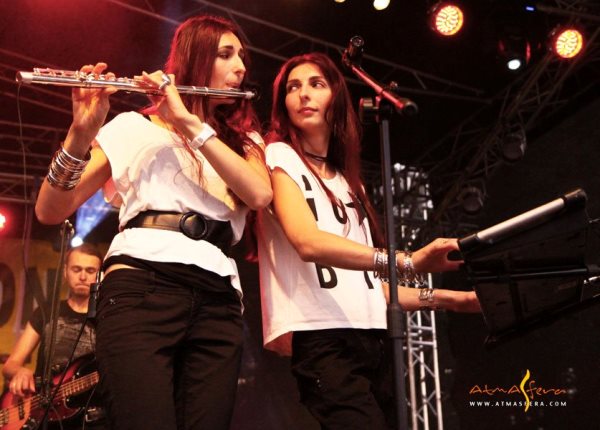 click image for AtmAsfera's FaceBook | image © AtmAsfera 2013 |
As we wrap up, is there anything that you would like to tell our readers?
We are wishing everyone to find happiness within themself.
Thanks for the interview Yulya and Nastya. Special thanks to Oleg Sushkov for organizing the interview for us.
Return to website contents

